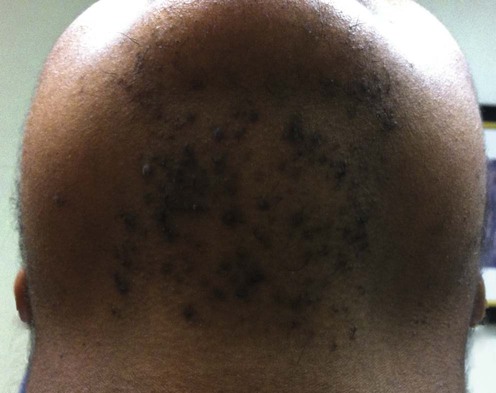The authors somehow conclude that this gene represents a significant genetic risk factor for PFB.
Pseudofolliculitis barbae

Management strategy
 Extraction of the foreign body by lifting the embedded distal sharpened ends of hairs
Extraction of the foreign body by lifting the embedded distal sharpened ends of hairs
 Prevention of further embedding by proper shaving technique or permanent disruption of the follicle’s ability to produce new hair
Prevention of further embedding by proper shaving technique or permanent disruption of the follicle’s ability to produce new hair
 Treatment of postinflammatory hyperpigmentation or hypertrophic scarring.
Treatment of postinflammatory hyperpigmentation or hypertrophic scarring.
Specific investigations
An unusual Ala12Thr polymorphism in the 1A alpha-helical segment of the companion layer-specific keratin K6hf: evidence for a risk factor in the etiology of the common hair disorder pseudofolliculitis barbae.
![]()
Stay updated, free articles. Join our Telegram channel

Full access? Get Clinical Tree




